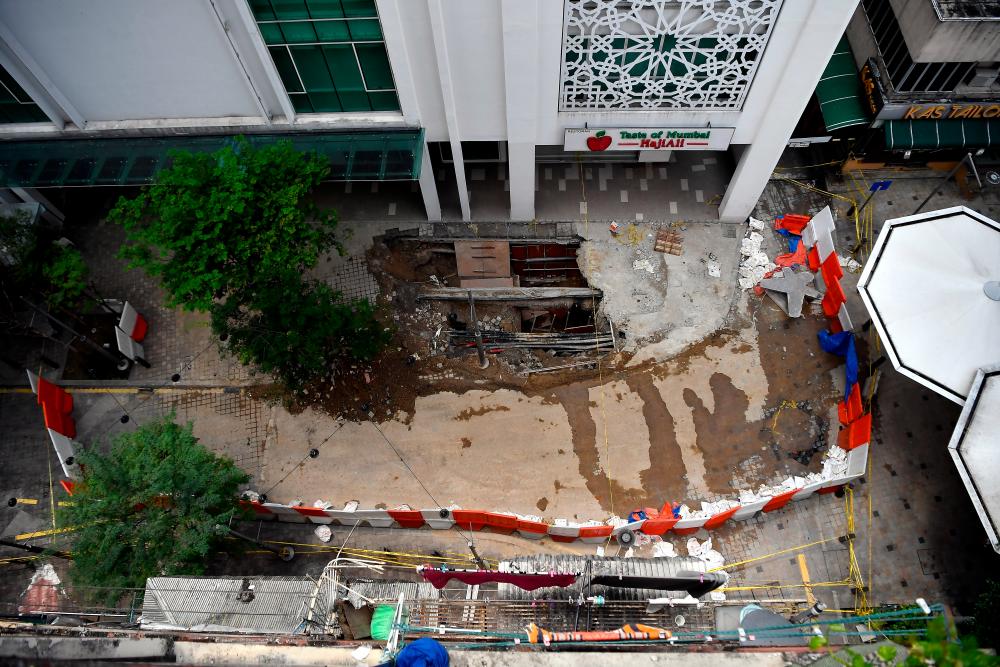PUTRAJAYA: A multi-agency investigation into the landslide incident at Masjid India, Kuala Lumpur found that the incident occurred as a result of anthropogenic (human activity), weather and erosion of the embankment soil layer below the surface of the area involved.
The Ministry of Natural Resources and Environmental Sustainability (NRES) announced that a technical report on the results of investigations related to geology and subsurface structures will be prepared by the Masjid India Soil Structure Task Force led by Kuala Lumpur City Hall (DBKL) within three months.
“NRES through the Department of Mineral and Geoscience Malaysia (JMG) has assisted in the subsurface investigation of the sinkhole incident in the Masjid India area involving an Indian woman.
“The JMG investigation has used Ground Penetration Radar (GPR) equipment to obtain a picture of the geological strata and subsurface utility system of the incident area for the purpose of a comprehensive recovery process by the responsible party,“ according to the statement which asserted that Kuala Lumpur is safe to live in.
For long-term planning, NRES said strengthening monitoring, maintenance, procedures and subsurface investigation methods on underground structures can identify and avoid any threats of landslides and sinkholes that may occur.
According to NRES, JMG is improving the subsurface data of Klang Valley area which covers 10 local authorities through the Greater KL Sub-Surface Geological Mapping Project to complete the existing information on the subsurface conditions of Kuala Lumpur which has been carried out under the 3DKL project.
“In terms of geology, the bedrock in Kuala Lumpur is based on an estimated 30 per cent limestone and 70 per cent granite and metasedimentary rocks, namely the Kenny Hill formation, Hawthornden schist and Dinding schist.
“The sinkhole area is based on schist, phyllite and quartzite rocks of the Kenny Hill Formation,“ according to NRES.
On August 23, a woman, G. Vijaya Lakshmi from Kuppam, Andhra Pradesh, India went missing after falling into an eight-meter deep hole in Jalan Masjid India.
However, the search and rescue (SAR) operation for the woman was stopped on August 31 after nine days, after taking into account the safety factor of the SAR operation team.









